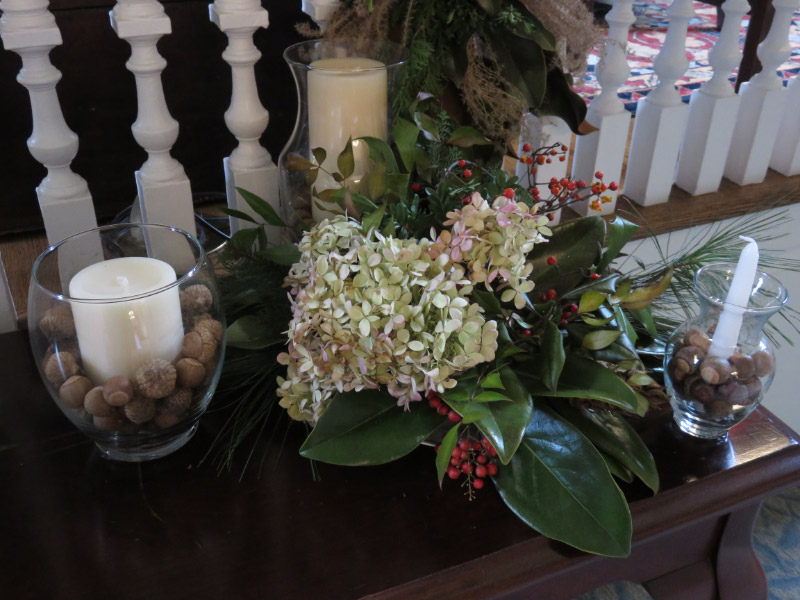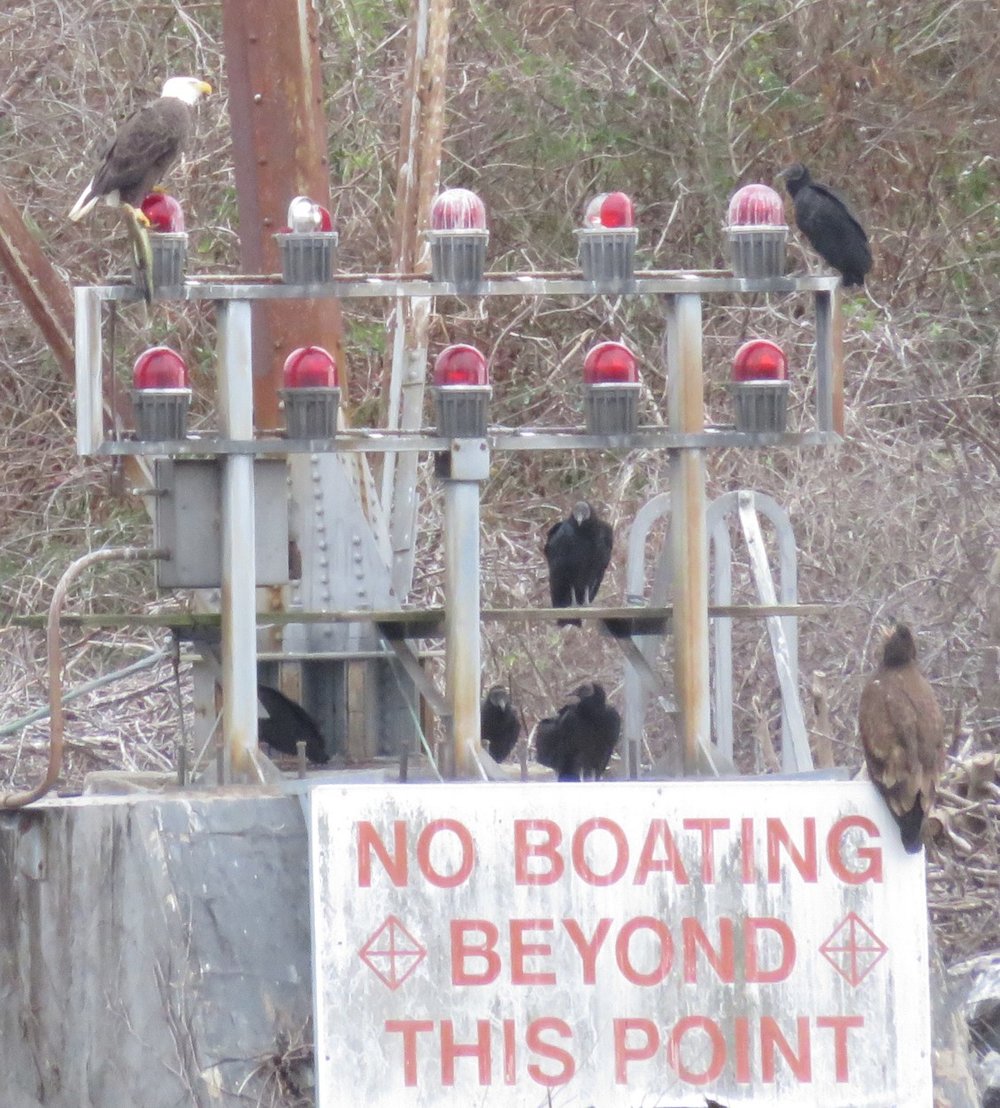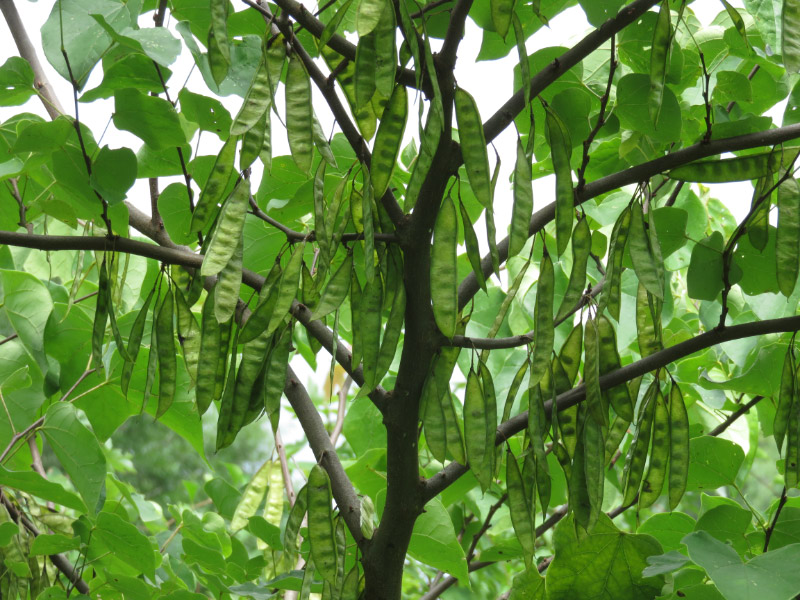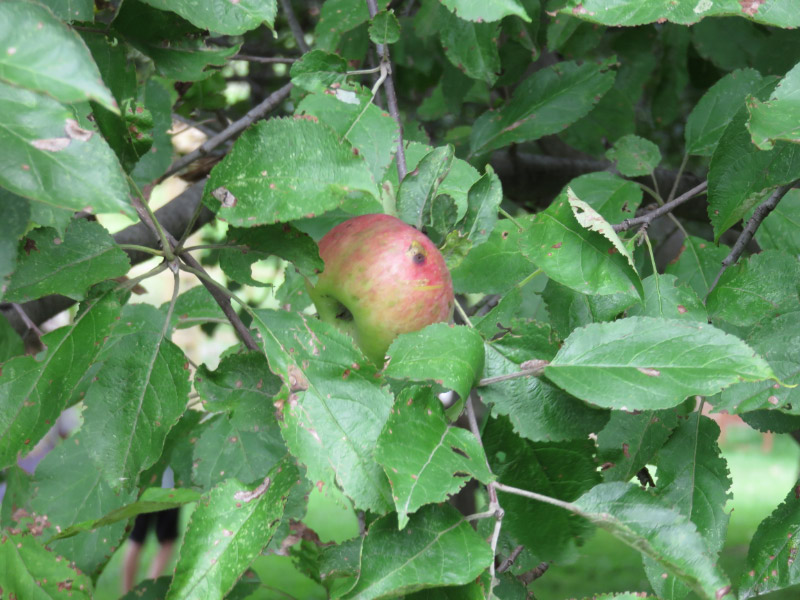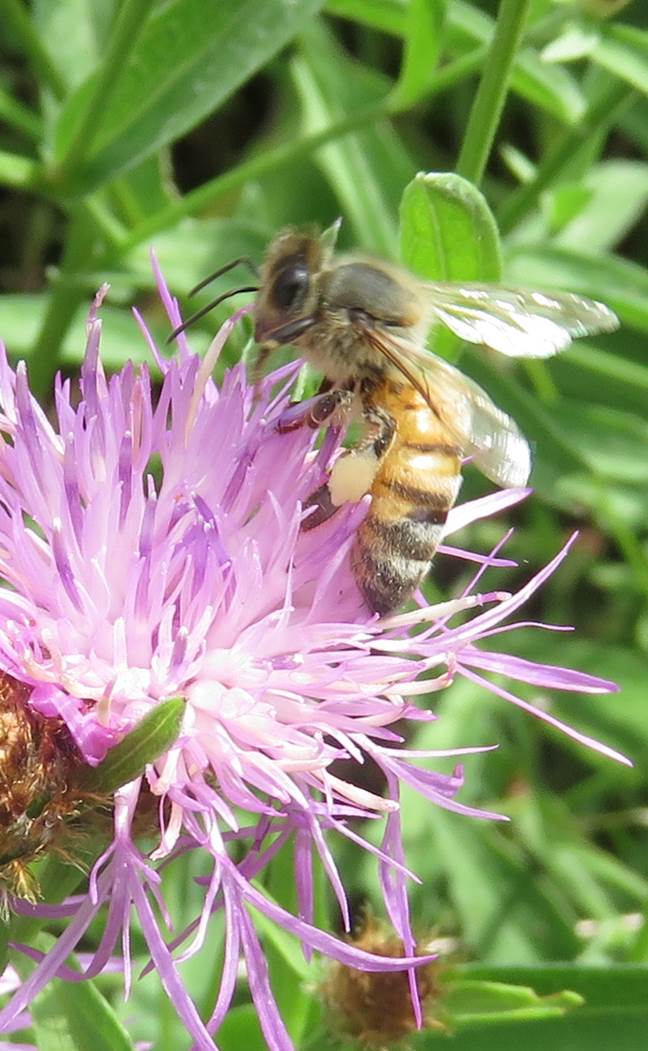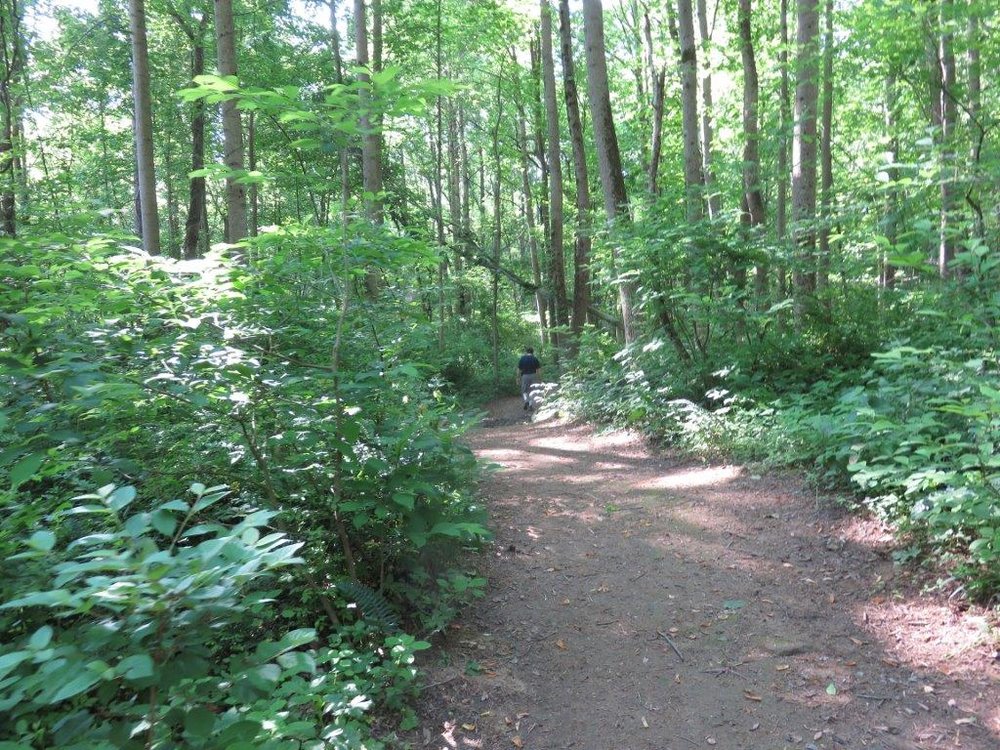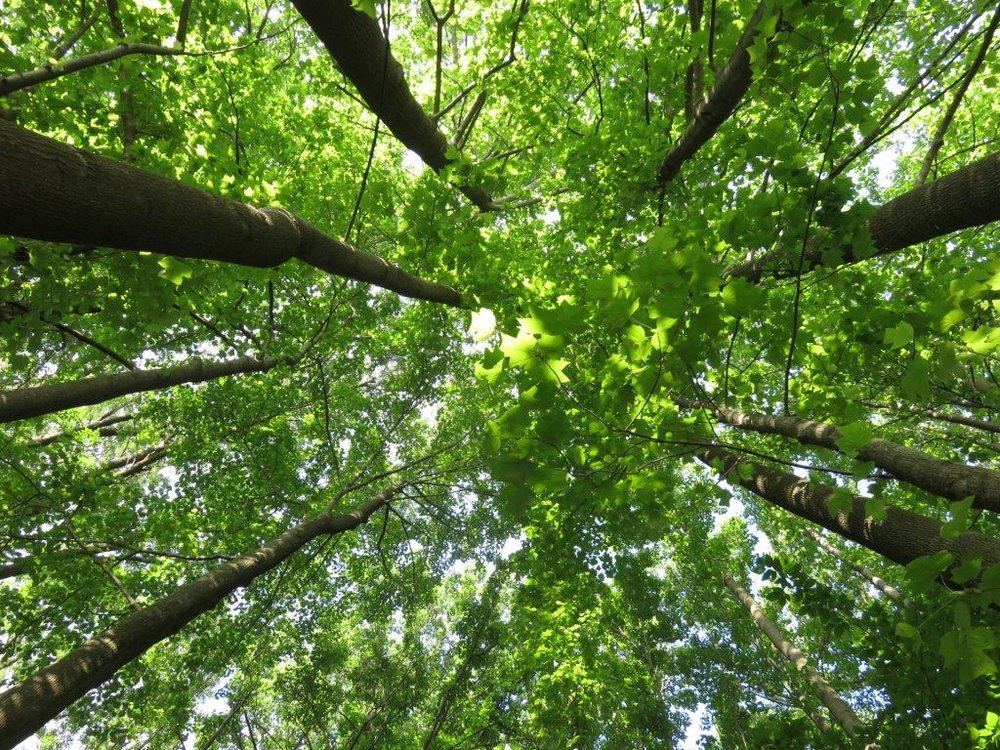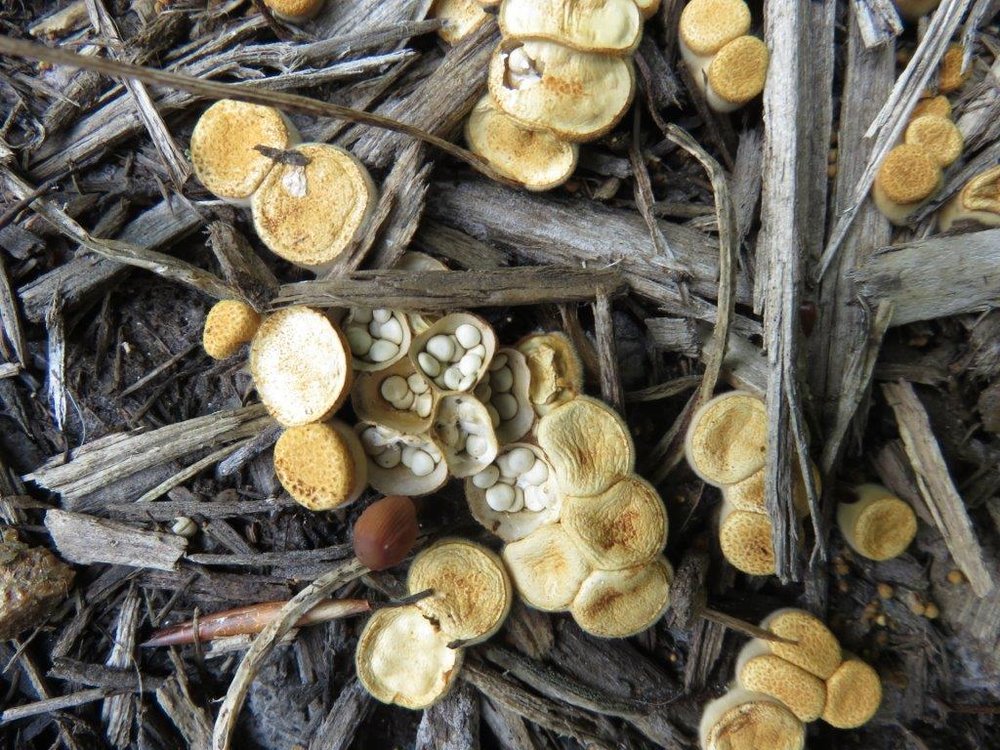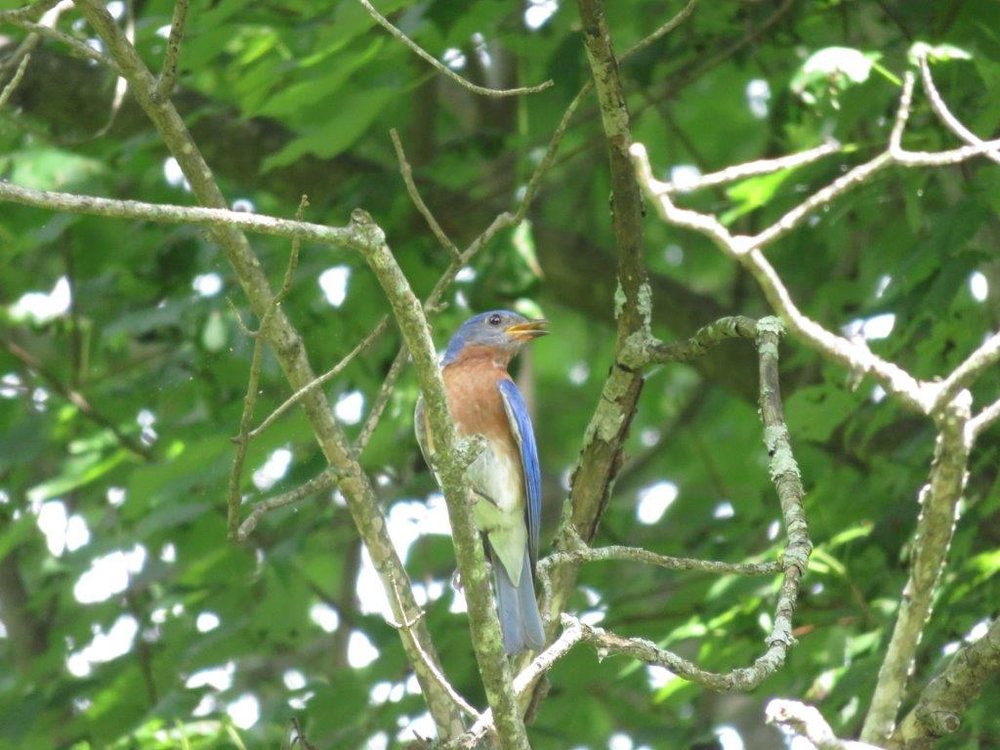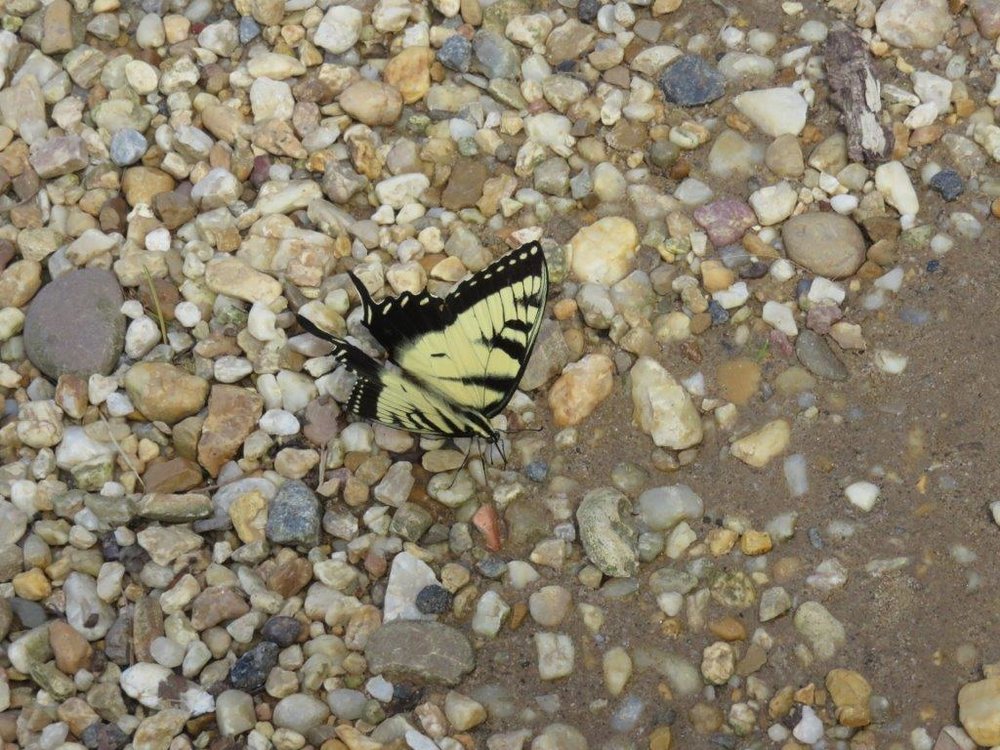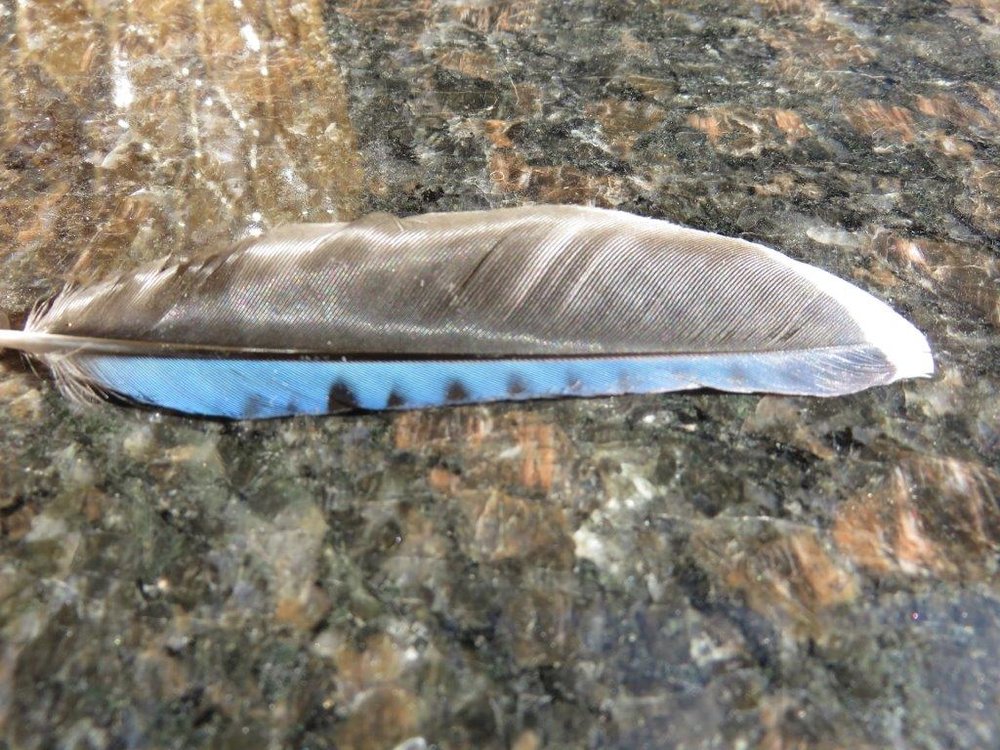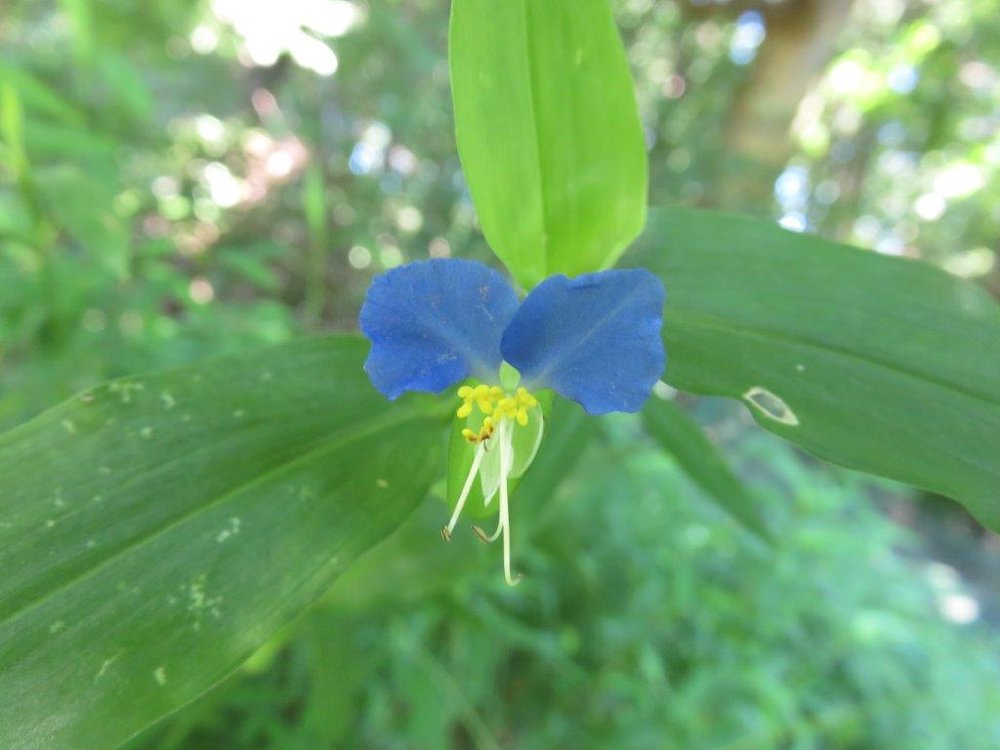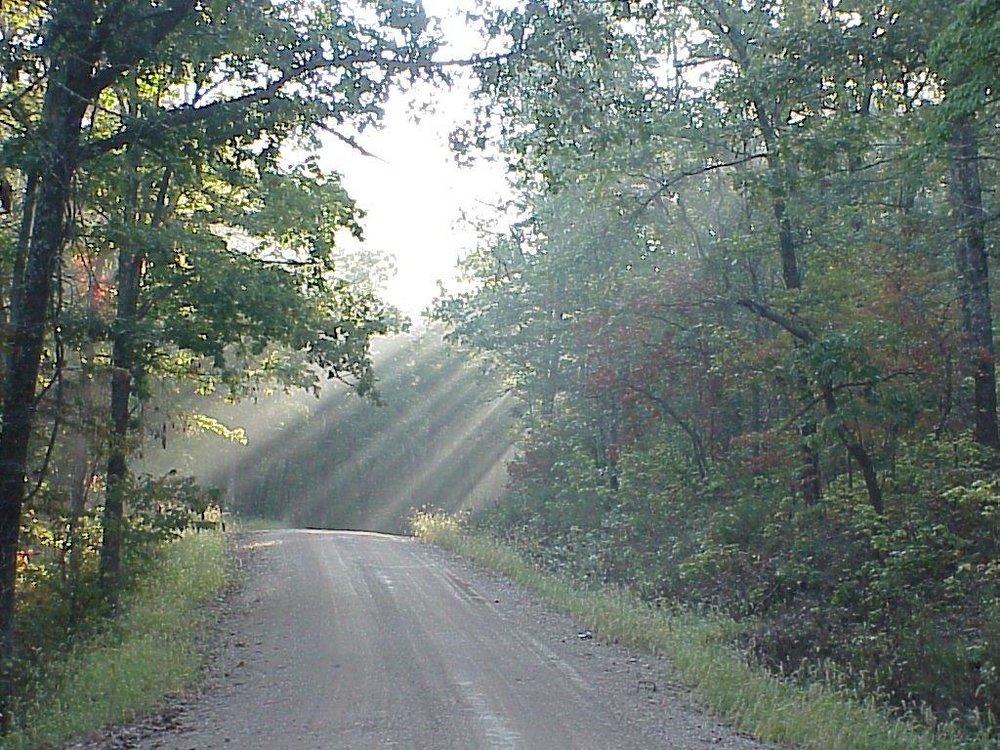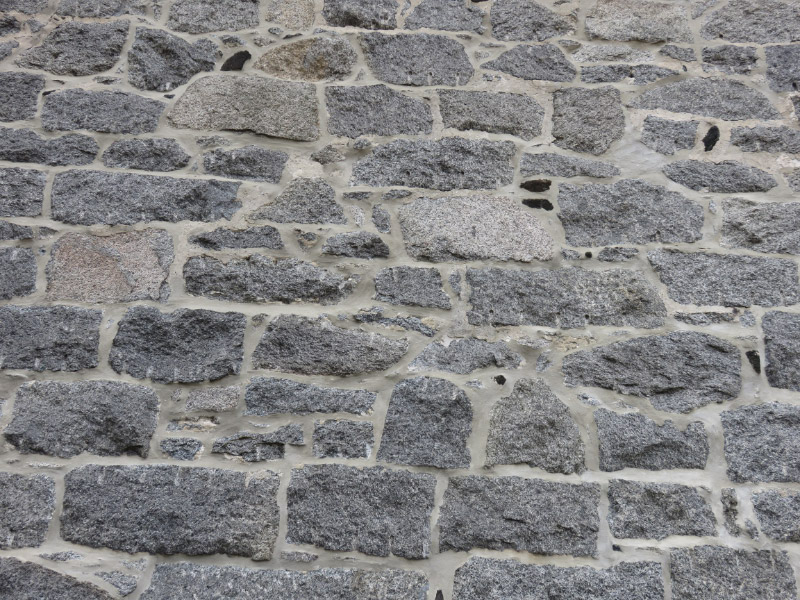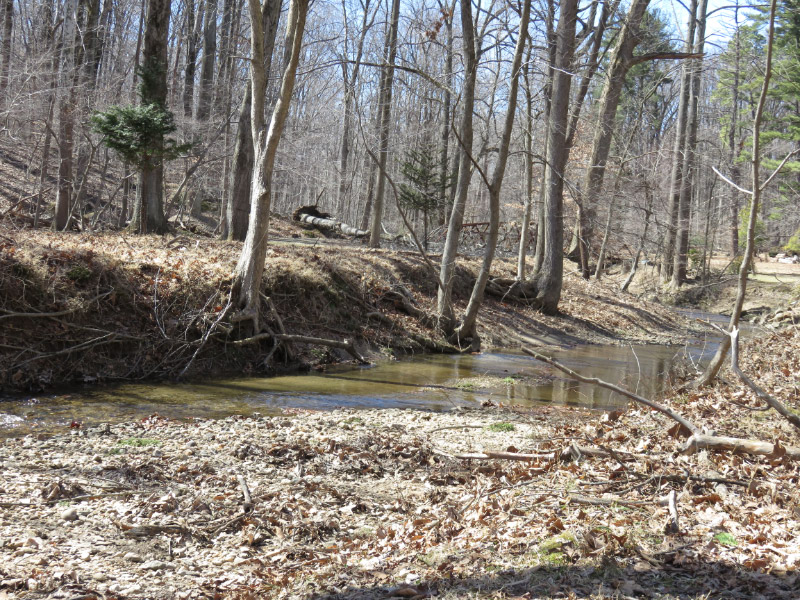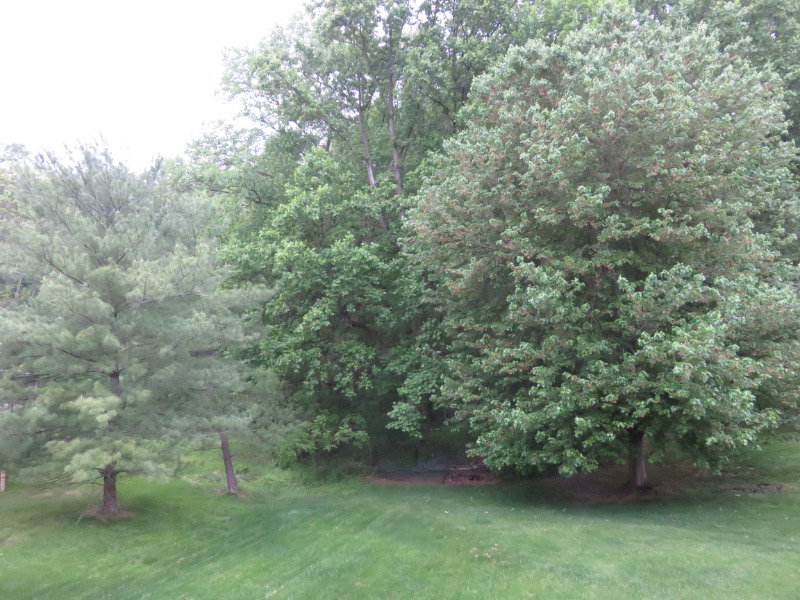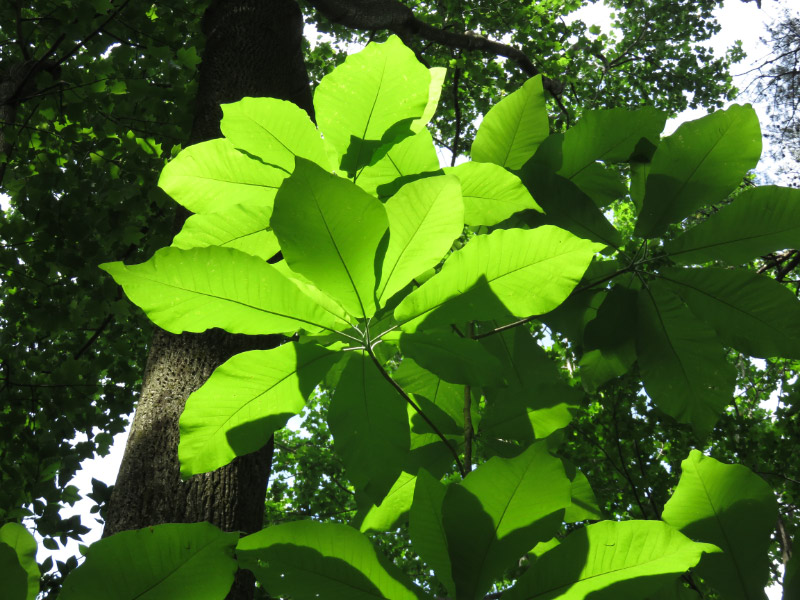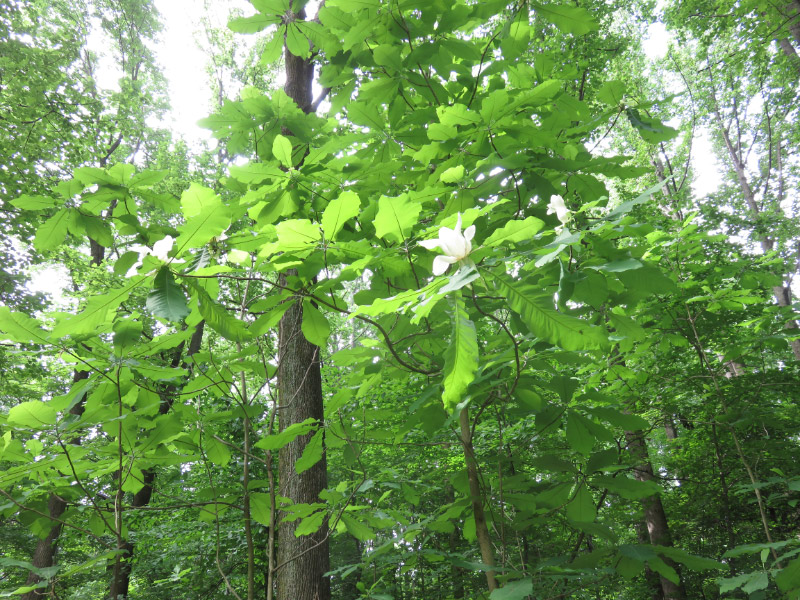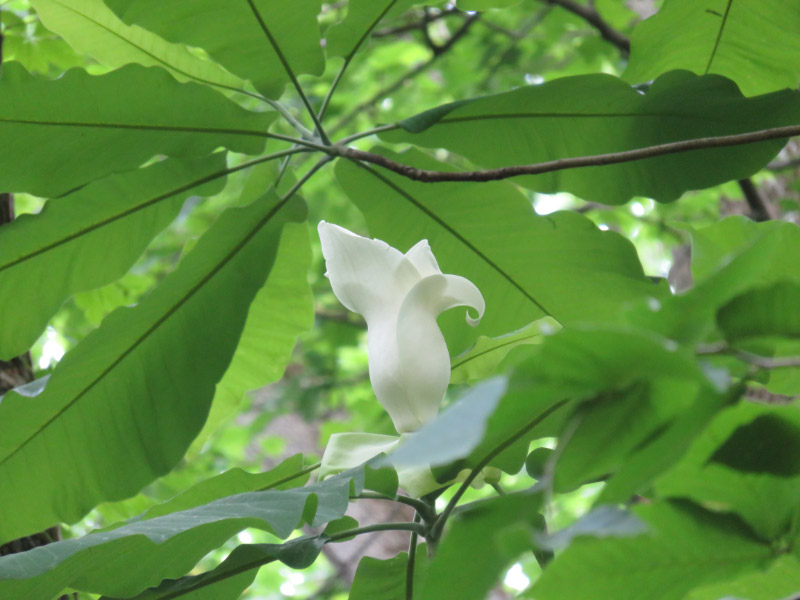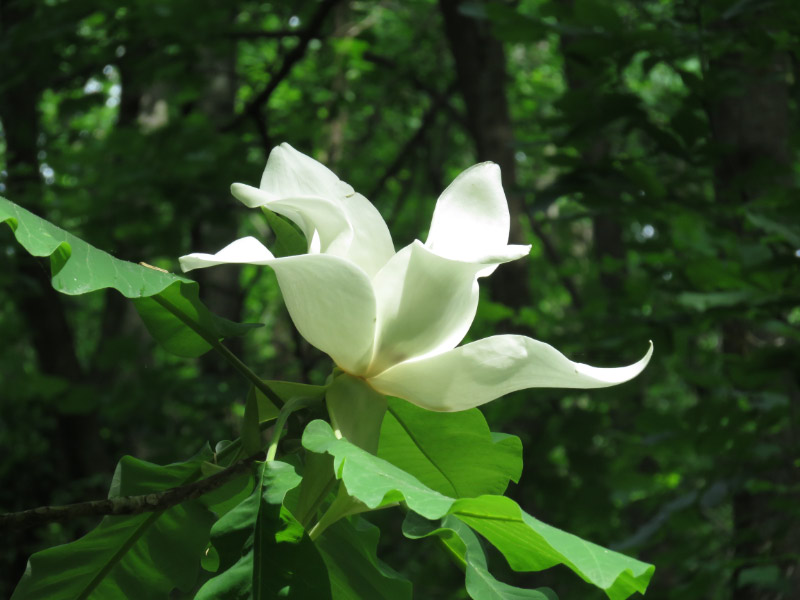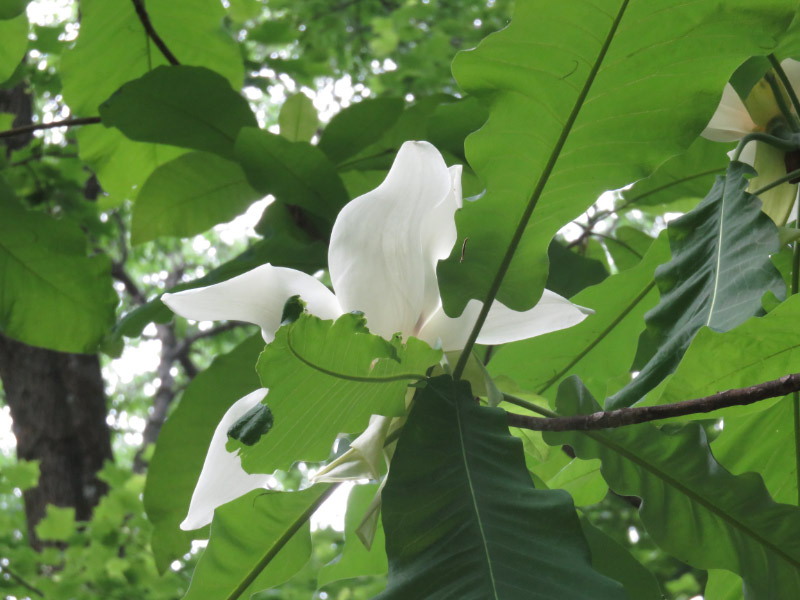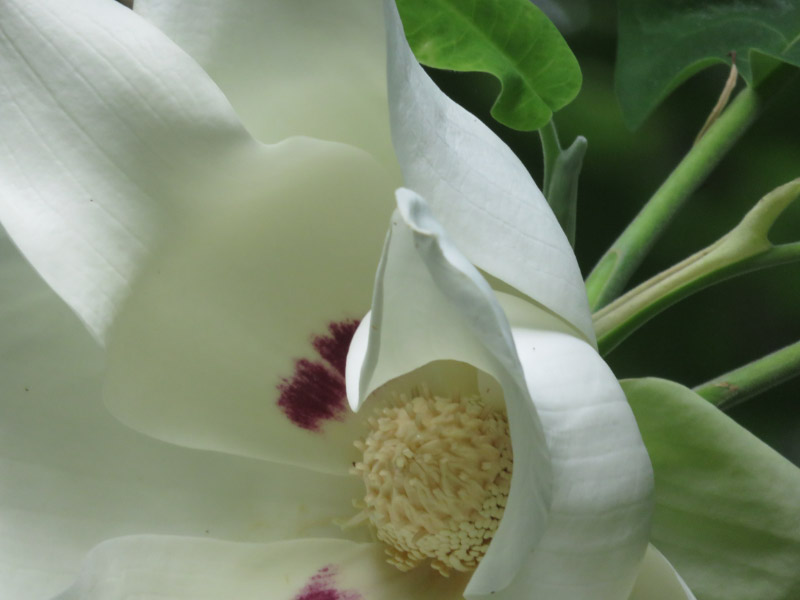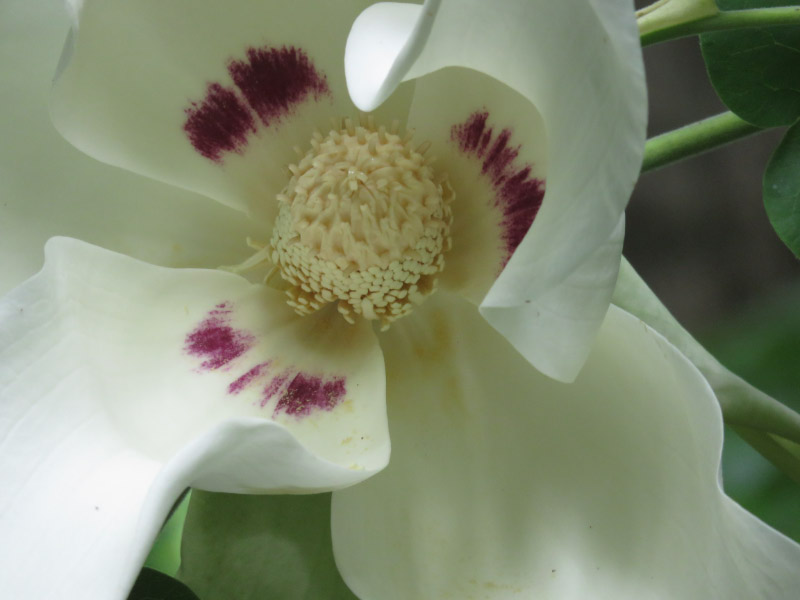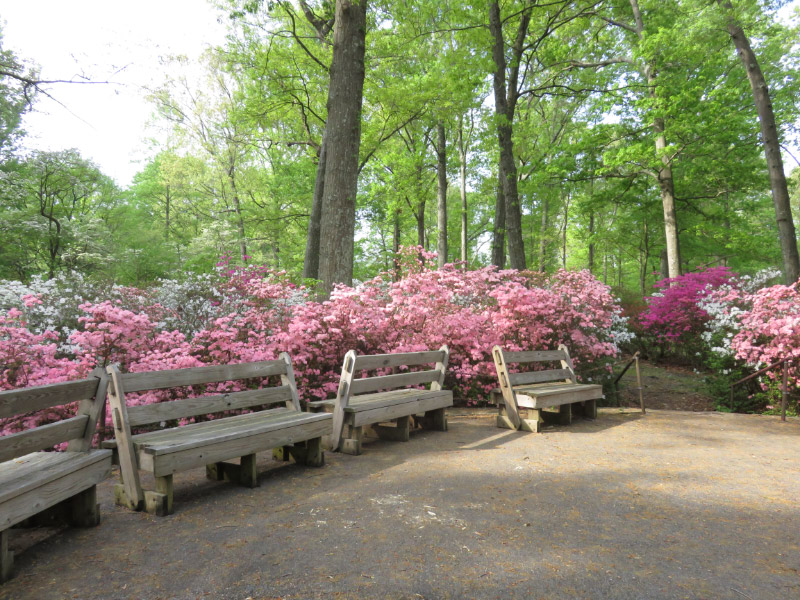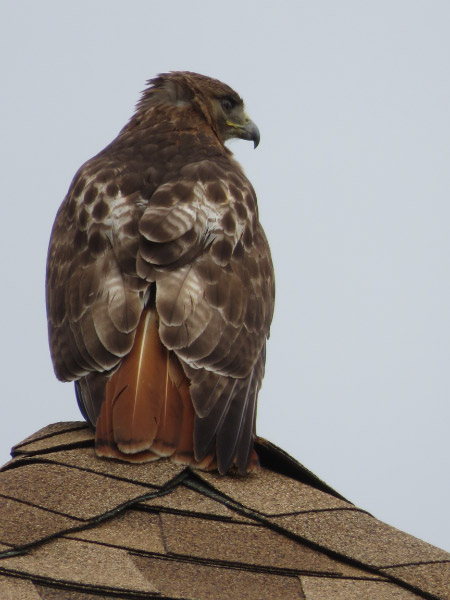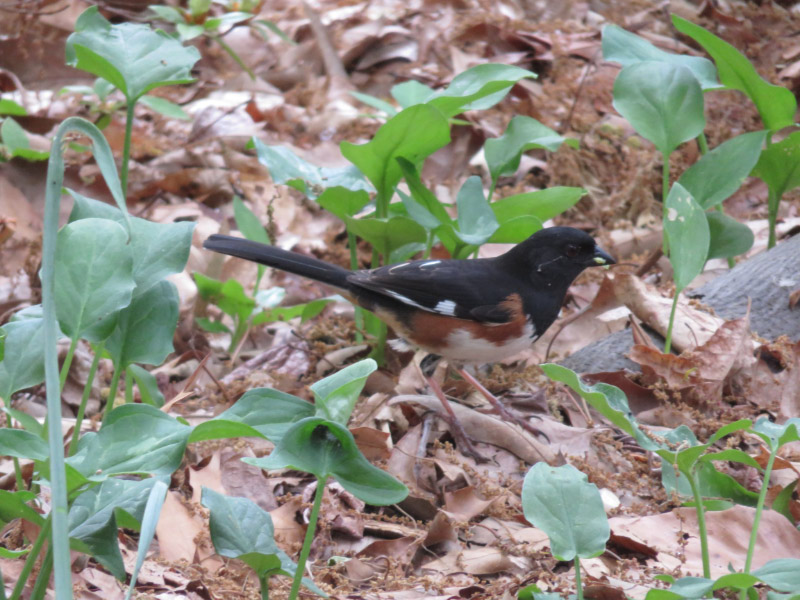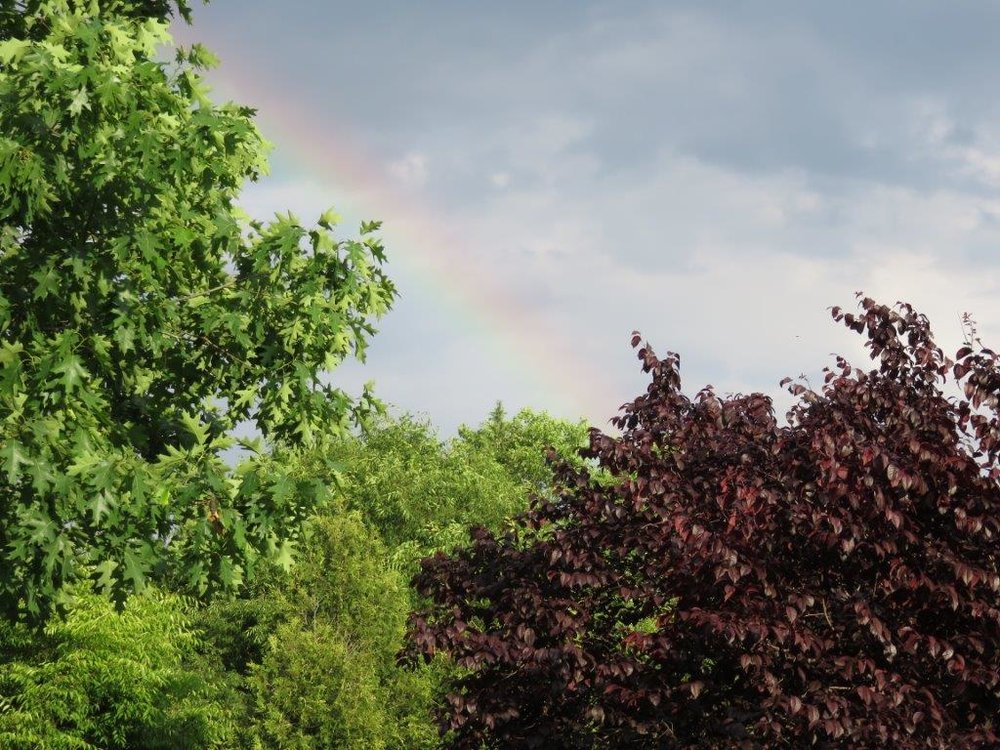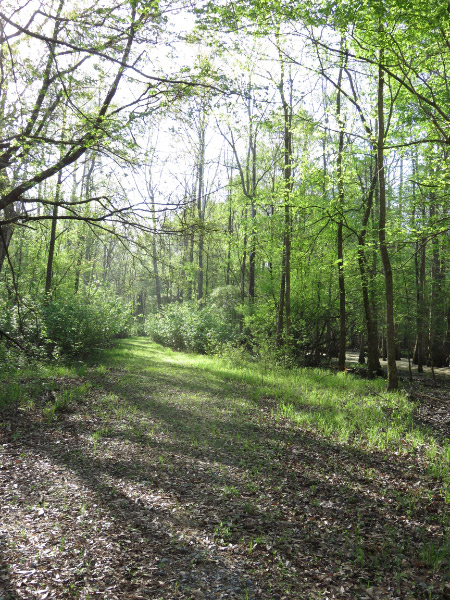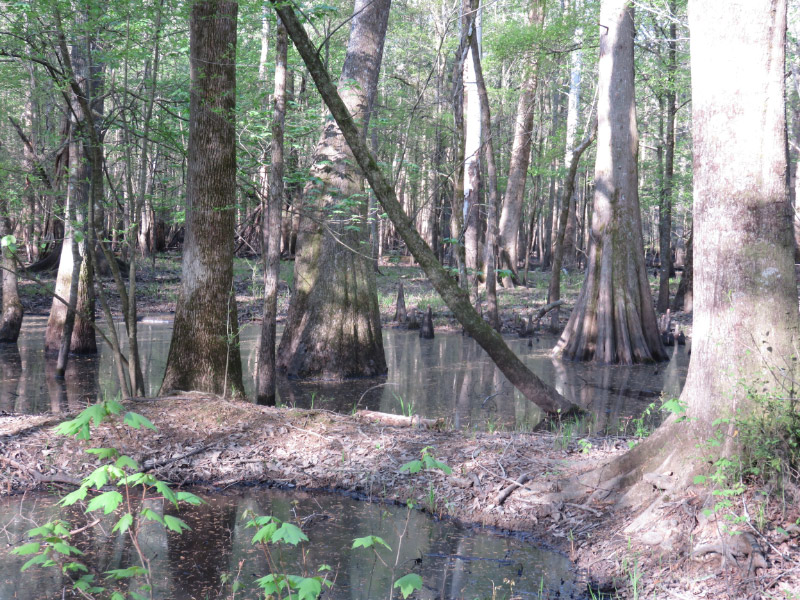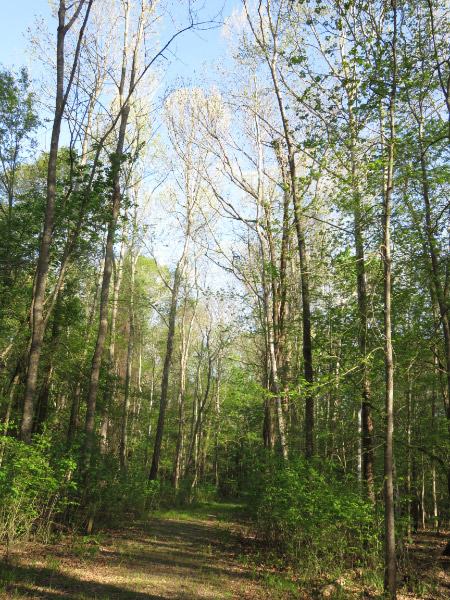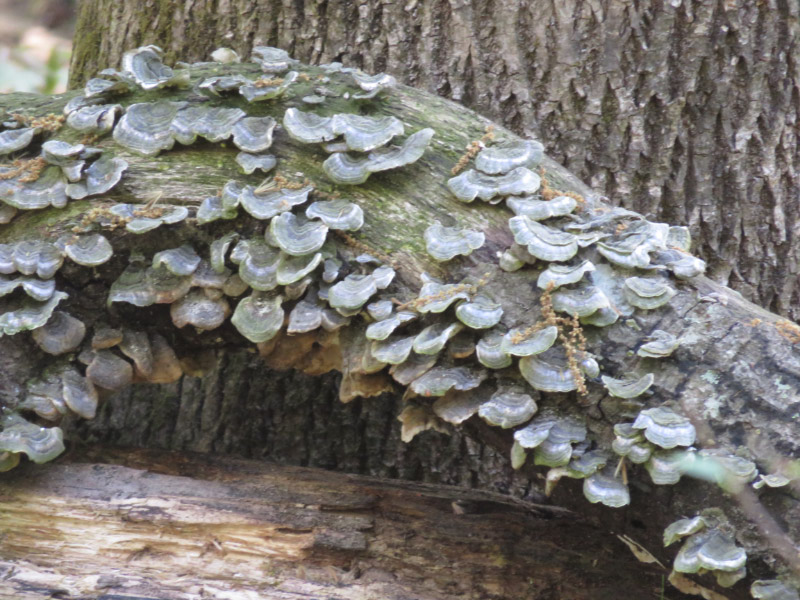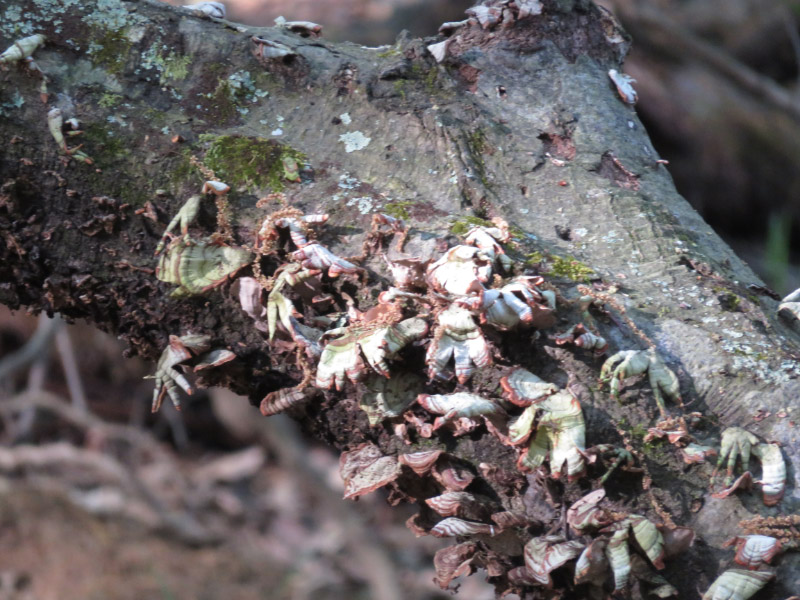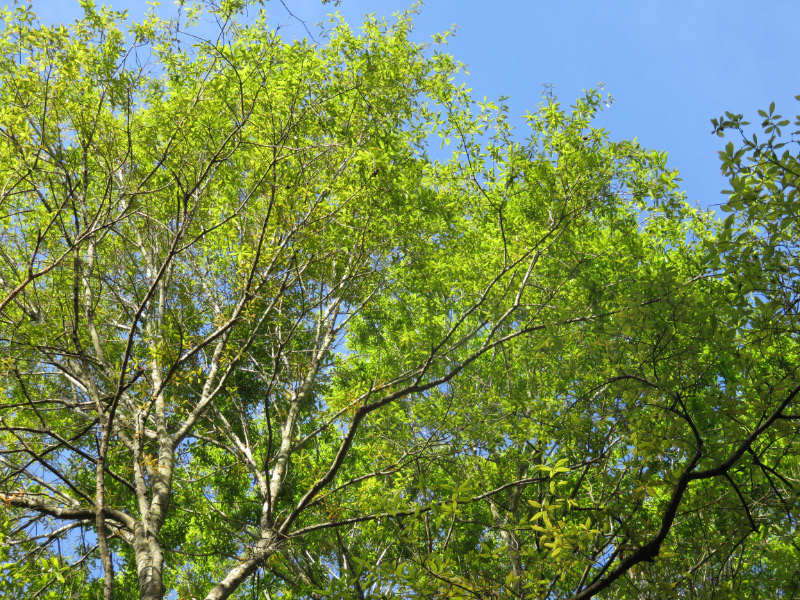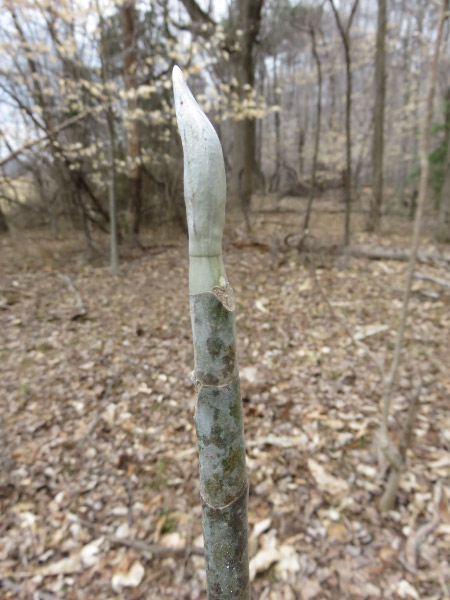Thurston Lava Tube and Kilauea Iki Trail
/The first small hikes that we did at Volcano National Park were two that share a parking area: Thurston Lava Tube (Nahuku) and Kilauea Iki.
The first is a trail that goes through a lava tube. My pictures of the lava tube did not turn out (lighting was too dim) but it was interesting to see the marks on the sides of the tube from the lavas that flowed through it. Along the way I saw colorful birds (this on might be an Apapane in the forest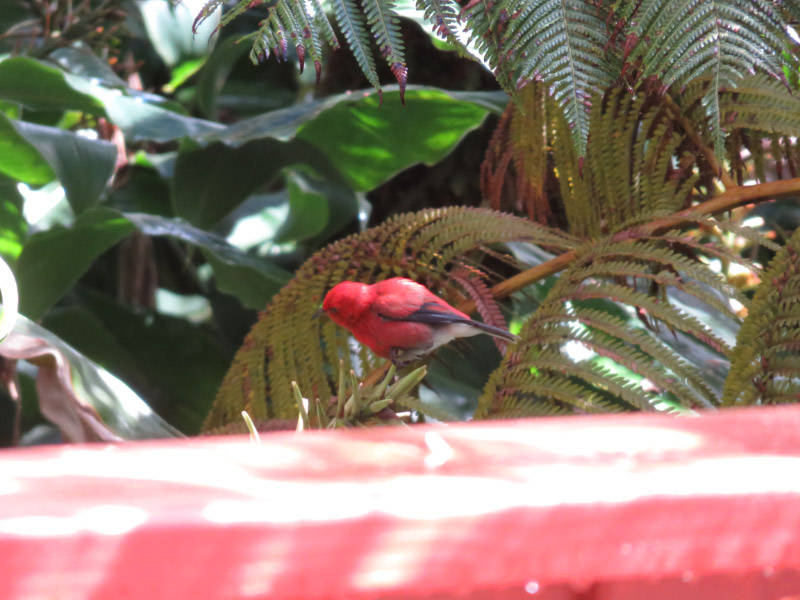
And ferns and moss that are colonizing the lava at the entrance to the tunnel.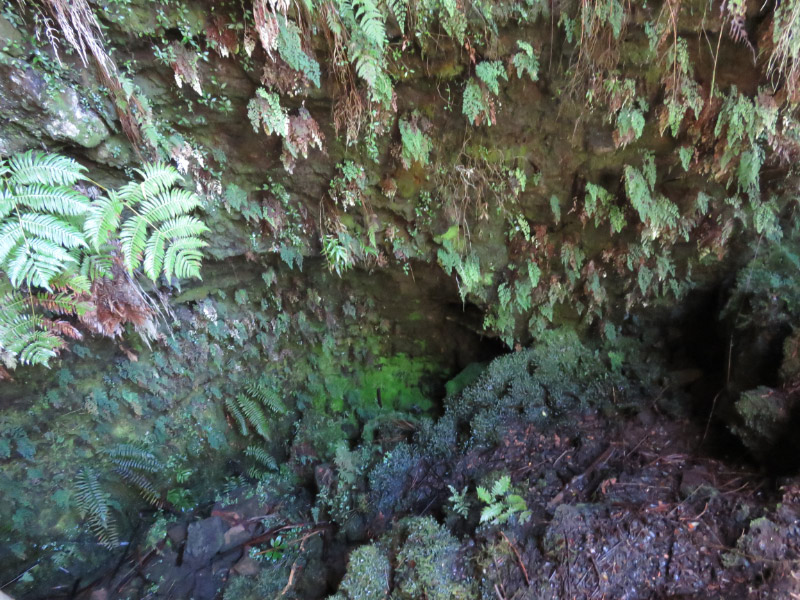
The hike to Kilauea Iki – a cooled lava lake – begins at the rim of the crater in the rainforest. The path proceeds down a series of switchbacks. The ferns are at eye level.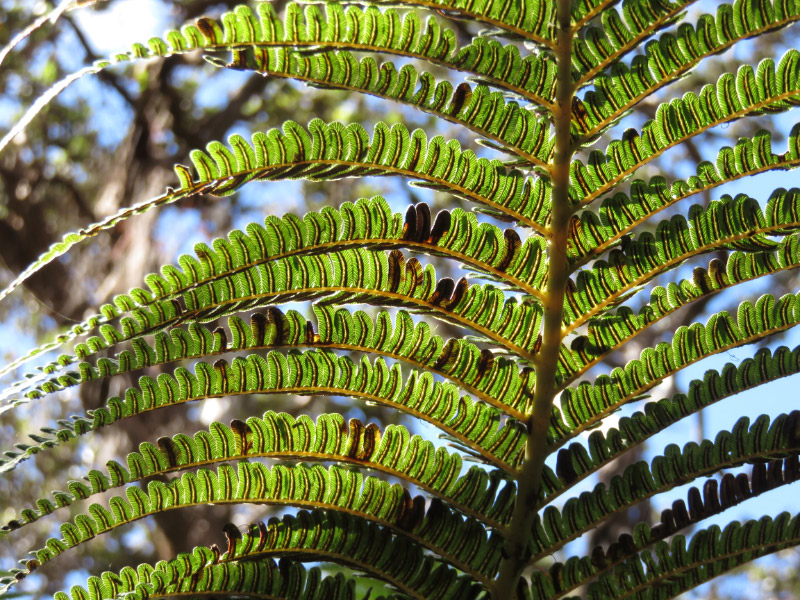
I captured quite an array of fiddleheads – purple, green, encased in a brown husk, hairy.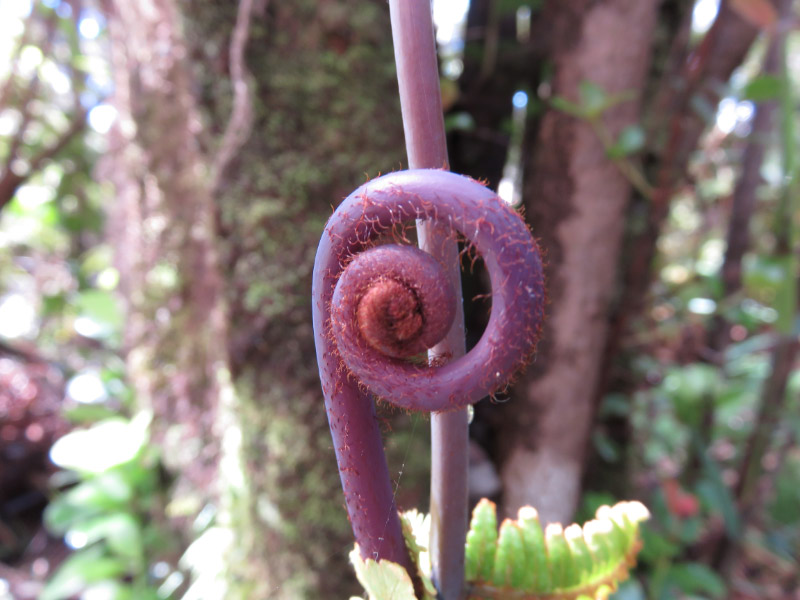
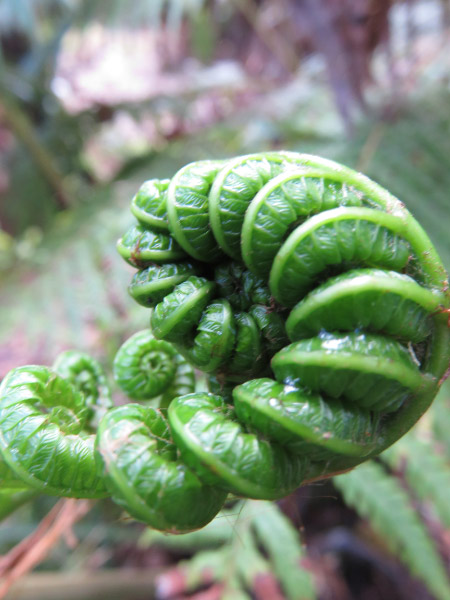
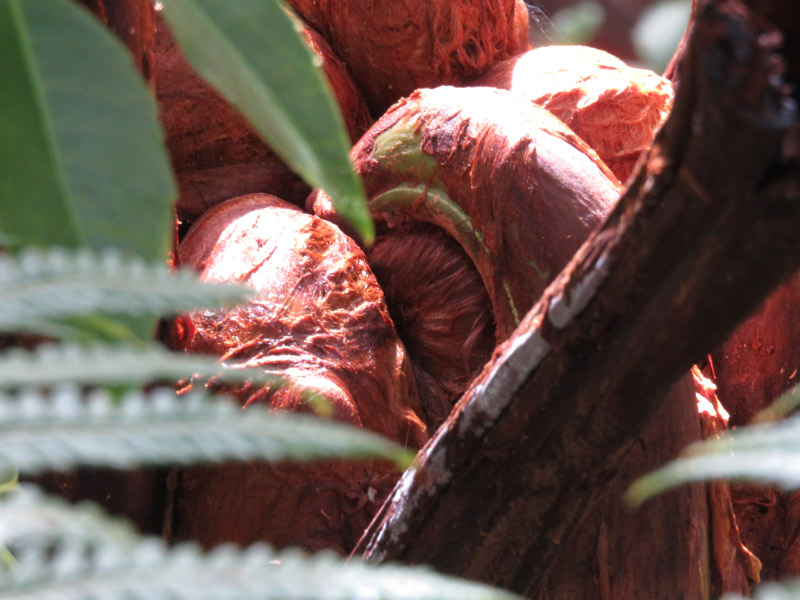

And then the trail emerges from the forest onto the lava lake. The trail here is marked with stakes of rocks on the undulating terrain of solidified lava. Do you see the people along the trail? That provides a sense of scale for the place. The lake was formed in 1959 – so a relatively young volcanic feature.
Ohi’a lehua have colonized the edge of the lava lake.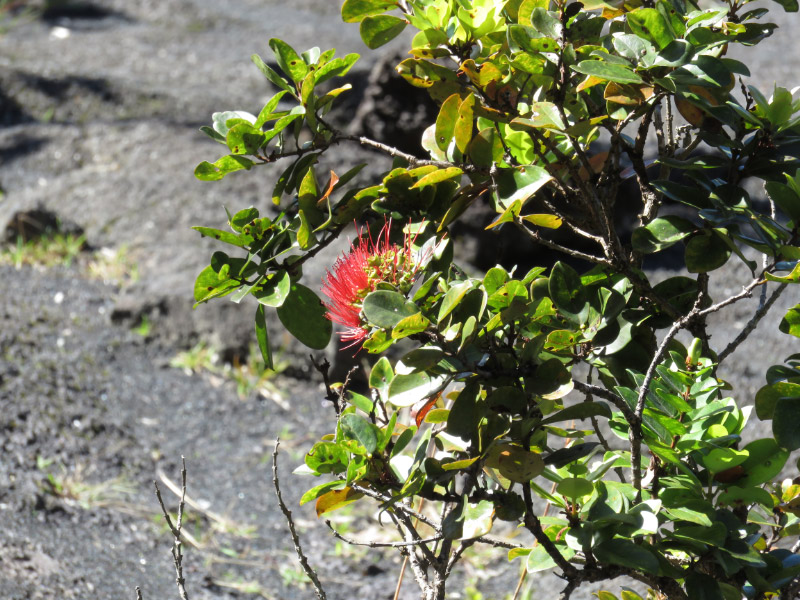
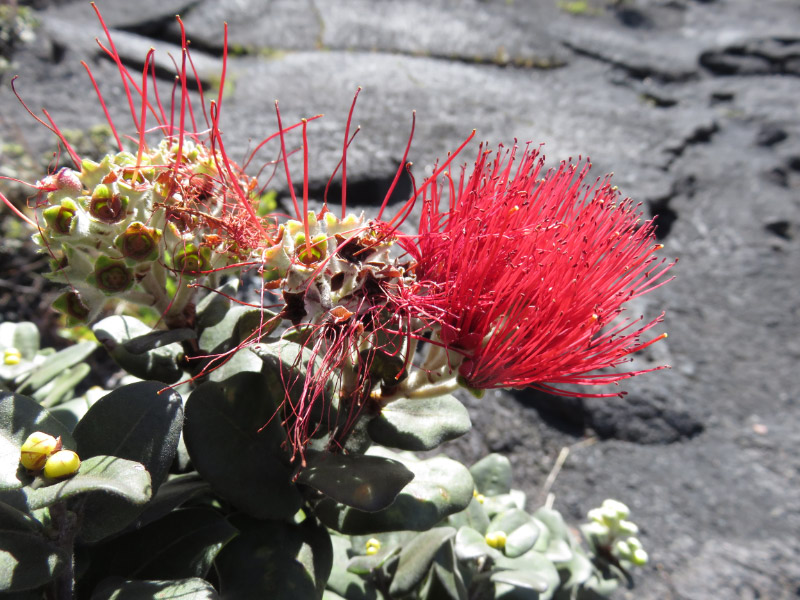
Ohelo are there as well. This one does not have any red berries. The Nene (Hawaiian goose) evidently like the berries.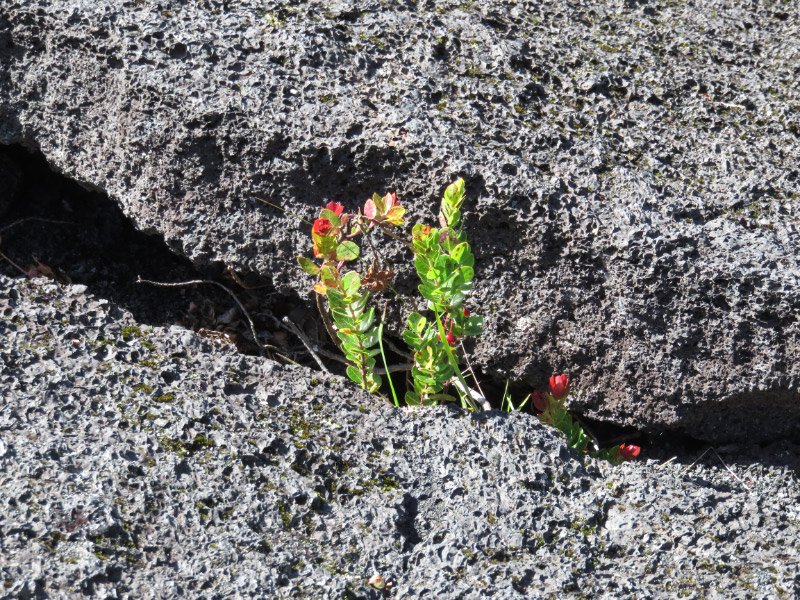
The Ae ferns area also hardy colonizers of the lava.
At one edge of the lava lake there are steam vents.
We didn’t hike all the way across the lake…climbing back up the trail to the parking lot through the forest. Here is the view from after we reached the top.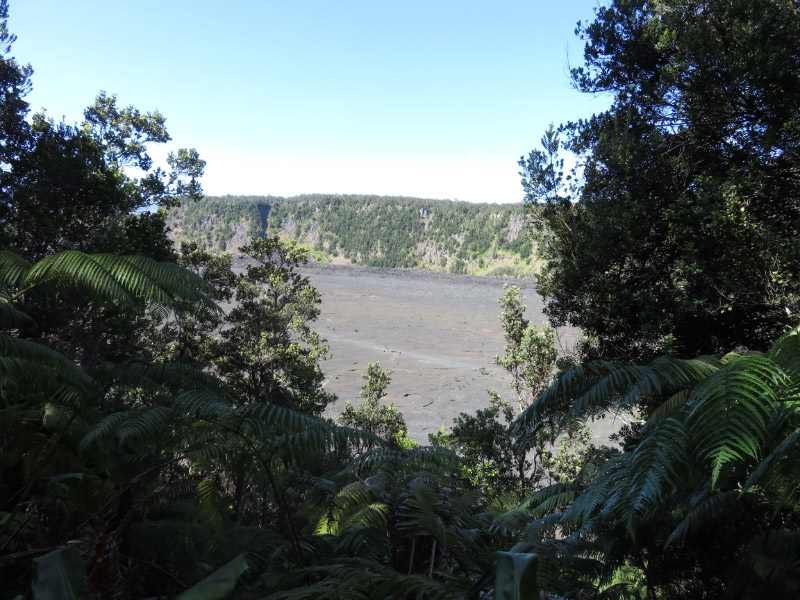
Previous Hawaii Posts:

